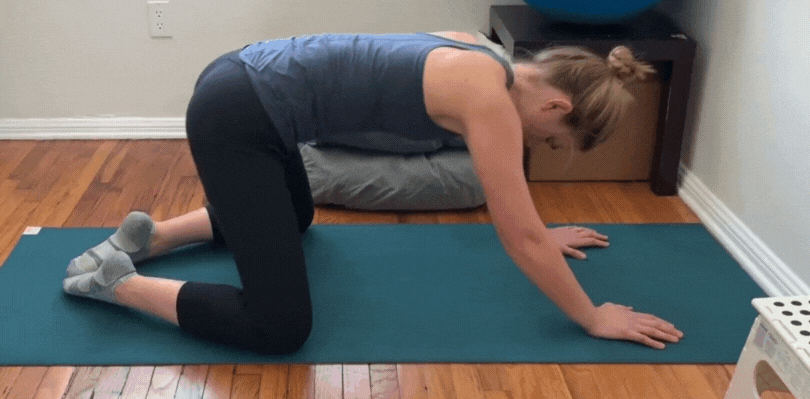Migraine can be debilitating and affect your quality of life. It’s estimated that over 38 million people in the United States suffer from it, making it a common health condition. Migraines are characterized by throbbing headaches, nausea, sensitivity to light and sound, and sometimes even vomiting. While there are several medications available to treat migraines, yoga can be an effective natural remedy for reducing symptoms and preventing future attacks. In this blog post, we will explore how yoga can help relieve migraines and provide some tips for incorporating yoga into your migraine management plan.
How Yoga Can Help Relieve Migraine?
Yoga has been shown to be effective in reducing the frequency and intensity of migraines. Here are some ways that yoga can help alleviate migraines:
- Reducing stress: Stress is a common trigger for migraines. Yoga can help reduce stress by calming the nervous system and promoting relaxation. Yoga also encourages deep breathing, which can help to slow down your heart rate and reduce tension in your muscles.
- Improving circulation: Poor circulation can be a contributing factor to migraines. Yoga poses such as forward bends and inversions can help to increase blood flow to the head and neck, which can help to reduce the severity of a migraine.
- Stretching and releasing tension: Tension in the neck, shoulders and upper back can contribute to migraines. Yoga postures can help to stretch and release tension in these areas, which can reduce the likelihood of migraines occurring.
- Improving sleep: Sleep is important for migraine sufferers, as lack of sleep can trigger migraines. Yoga can help improve the quality of sleep by promoting relaxation and reducing stress.
Yoga Poses For Migraine
Here are some yoga poses that can be effective in relieving migraine:
1. Child’s Pose

- Begin on your hands and knees with your wrists under your shoulders and your knees under your hips.
- Bring your big toes to the touch and widen your knees apart as wide as feels comfortable.
- Lower your hips back towards your heels as you stretch your arms forward, resting your forehead on the floor or on a prop.
- Relax your entire body and breathe deeply, holding the pose for 1-3 minutes.
2. Forward Fold

- Begin standing with your feet hip-width apart and your arms at your sides.
- Inhale and reach your arms overhead, lengthening your spine.
- Exhale and fold forward, bringing your hands to the floor or to blocks.
- Relax your head and neck as you deepen the stretch in your hamstrings and back.
- Hold the pose for 5-10 breaths, then slowly roll up to standing.
3. Downward-Facing Dog

- Begin on your hands and knees with your wrists under your shoulders and your knees under your hips.
- Tuck your toes and lift your hips up and back, straightening your arms and legs.
- Press your hands and feet into the floor as you lengthen through your spine.
- Relax your head and neck, and hold the pose for 5-10 breaths.
4. Seated Twist

- Begin seated with your legs extended in front of you.
- Bend your right knee and place your right foot on the floor outside your left knee.
- Bring your left elbow to the outside of your right knee, and use your arm to gently twist your torso to the right.
- Place your right hand behind you for support, and lengthen through your spine with each inhale.
- Hold the pose for 5-10 breaths, then repeat on the other side.
5. Legs Up the Wall
- Sit with your left side against a wall, with your legs extended out in front of you.
- Lie down on your back and swing your legs up the wall, so that your feet are pointing towards the ceiling.
- Scoot your hips as close to the wall as feels comfortable, and relax your arms at your sides.
- Breathe deeply and relax your entire body, holding the pose for 5-10 minutes.
These poses can help to relieve tension in the neck, shoulders, and upper back, and increase blood flow to the head and neck. Remember to listen to your body, and only go as far into the poses as feels comfortable. If you have any concerns about starting a yoga practice for migraines, consult with your healthcare provider.
Other Ways To Cure Migraine
- Medication: Many people who suffer from migraines find relief with over-the-counter pain relievers, such as ibuprofen or aspirin. For those who experience more severe migraines, prescription medications such as triptans or ergotamines may be necessary.
- Acupuncture: Acupuncture is a traditional Chinese medicine practice that involves the insertion of thin needles into specific points of the body. Some studies have found that acupuncture can be an effective treatment for migraines, although more research is needed.
- Stress Management: Stress is a common trigger for migraines, so finding ways to manage stress can be helpful in preventing or reducing the frequency and intensity of migraines. Techniques such as deep breathing, meditation, and yoga can be effective in reducing stress levels.
Read More: How To Cure Migraine Rapidly? – Proven Tips And Treatments
FAQs
Can yoga really help with migraines?
Yes, yoga can be an effective complementary therapy for migraines. Certain yoga poses can help to reduce tension and promote relaxation in the neck, shoulders, and upper back, which can be helpful for preventing or reducing the frequency and intensity of migraines. Additionally, yoga can help to reduce stress levels, which is a common trigger for migraines.
What are some specific yoga poses that can help with migraine?
There are several yoga poses that can be particularly helpful for migraines, including Child’s Pose, Forward Fold, Downward-Facing Dog, Seated Twist, and Legs Up the Wall. These poses can help to increase blood flow to the head and neck, reduce tension, and promote relaxation.
Can anyone do yoga for migraine?
While yoga can be a helpful complementary therapy for migraines, it may not be suitable for everyone. It is important to consult with your healthcare provider before starting a yoga practice, particularly if you have any pre-existing health conditions or injuries. Additionally, it is important to listen to your body and only go as far into the poses as feels comfortable, as pushing yourself too hard can actually exacerbate migraines.

